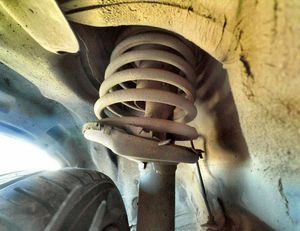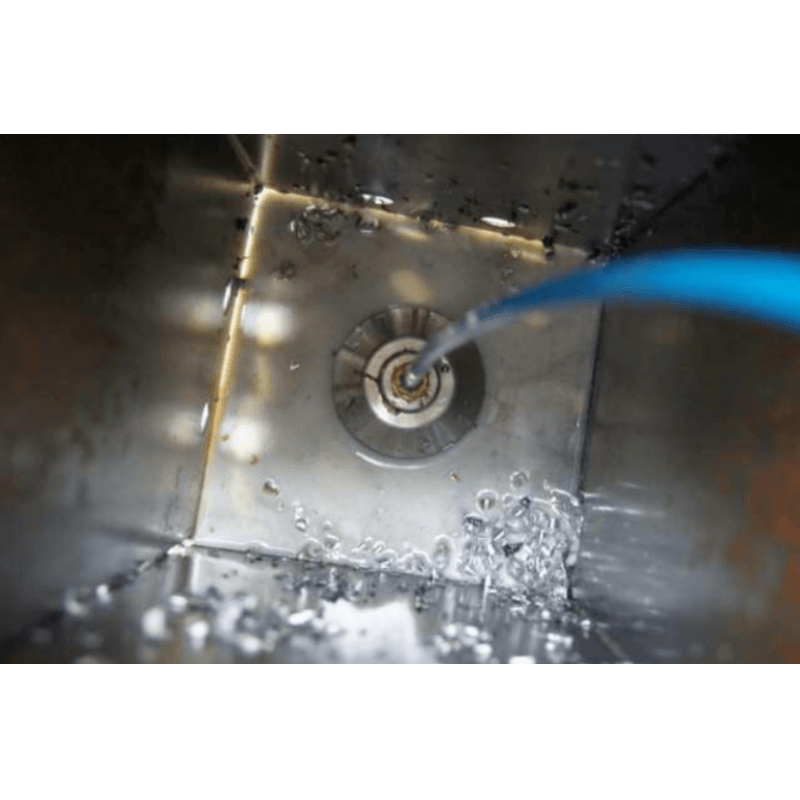
Symptoms of bad or faulty suspension springs
Content
Common signs include vehicle leaning to one side, uneven tire wear, bouncing while driving, and bottoming out.
The suspension that keeps your car moving smoothly over bumps, negotiating corners, and moving safely from point A to point B is made up of several components that work together to accomplish these tasks. One of the most important and durable parts are suspension springs or commonly referred to as suspension coil springs. The coil spring itself is made from high quality steel and acts as a buffer between the shocks and struts, the car frame and the lower suspension components. However, while suspension springs are incredibly strong, mechanical failures do occasionally occur.
When a suspension spring wears out or breaks, both sides of the same axle need to be replaced. This is not an easy task as suspension spring removal requires special tools, proper training and experience to do the job. It is also strongly recommended that after replacing the suspension springs, the front suspension be adjusted by an ASE certified mechanic or a specialized automotive shop.
Listed below are some of the common symptoms that may indicate a problem with your suspension springs.
1. Vehicle tilted to one side
One of the tasks of the suspension springs is to keep the balance of the car on equal sides. When a spring breaks or shows signs of premature wear, one common side effect is that one side of the car will appear taller than the other. When you notice that the left or right side of your vehicle seems to be higher or lower than the other side, see your local ASE certified mechanic for an inspection and diagnosis of the problem as this can affect steering, braking and acceleration among other issues.
2. Uneven tire wear.
Most people don't usually check their tires for proper wear on a regular basis. However, during scheduled oil changes and tire changes, asking a technician to inspect your tires for proper inflation and wear patterns is more than acceptable. If the technician indicates that the tires are wearing more on the inside or outside of the tire, this is usually caused by a castor alignment or suspension camber problem. One common culprit in front suspension misalignment is a coil spring that is either wearing out or needs to be replaced. You may also notice uneven tire wear while driving when the tire shakes or vibrates at high speeds. This symptom is also common with wheel balancing but should be checked by a certified tire center or ASE mechanic.
3. The car bounces more while driving.
The springs also serve to keep the car from bouncing, especially when hitting potholes or normal bumps in the road. When a suspension spring starts to fail, it becomes much easier to compress it. The result of this is that the car's suspension will have more travel and therefore bounce more often. If you notice that your car, truck, or SUV bounces more often when passing speed bumps, in a driveway, or just on the road under normal driving conditions, contact your local ASE mechanic to have your suspension springs inspected and replaced if necessary.
4. The vehicle sags
As noted above, when the springs fail or show signs of wear, the car's suspension has more room to move up and down. One of the common side effects of a compressed suspension spring is that the car sags when driving over bumps in the road. This can cause significant damage to the vehicle's chassis and other parts of the vehicle, including oil pans, drive shaft, transmission, and rear crankcase.
Any time your vehicle breaks down, take it to your local ASE certified mechanic for inspection, diagnosis and repair as soon as possible.
Proactively maintaining your suspension will not only improve your vehicle's comfort and handling, but will also help prolong the life of your tires and other critical components in your car, truck or SUV. Take the time to recognize these warning signs and take preventive action to keep your vehicle's suspension springs in top shape.
